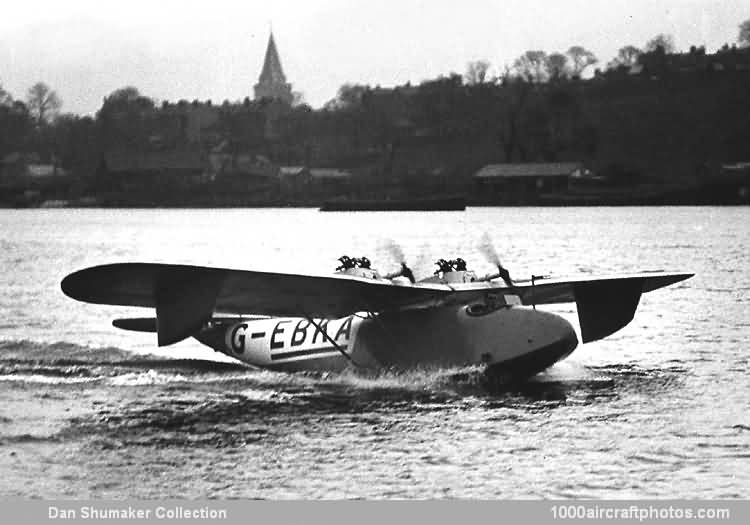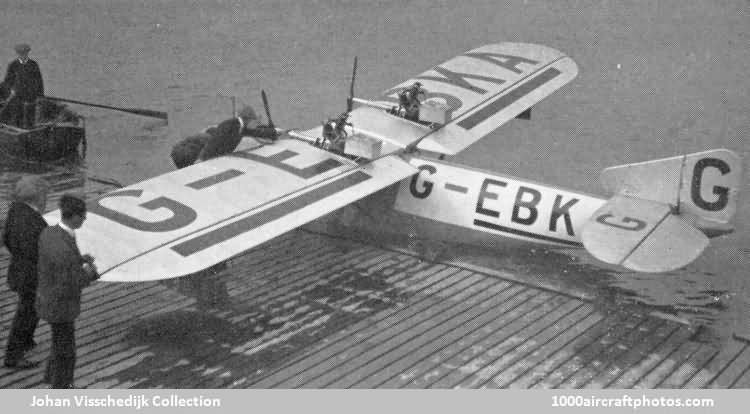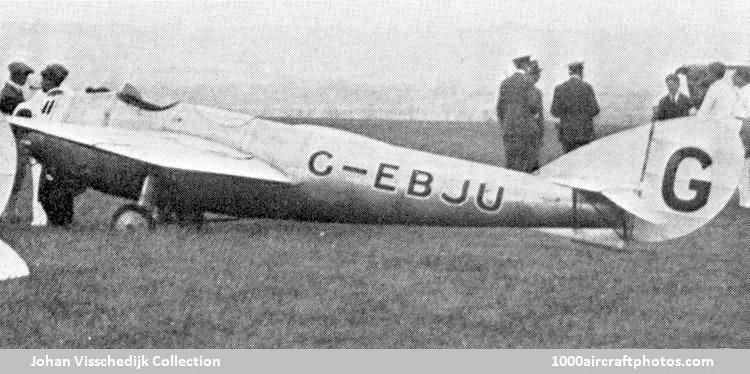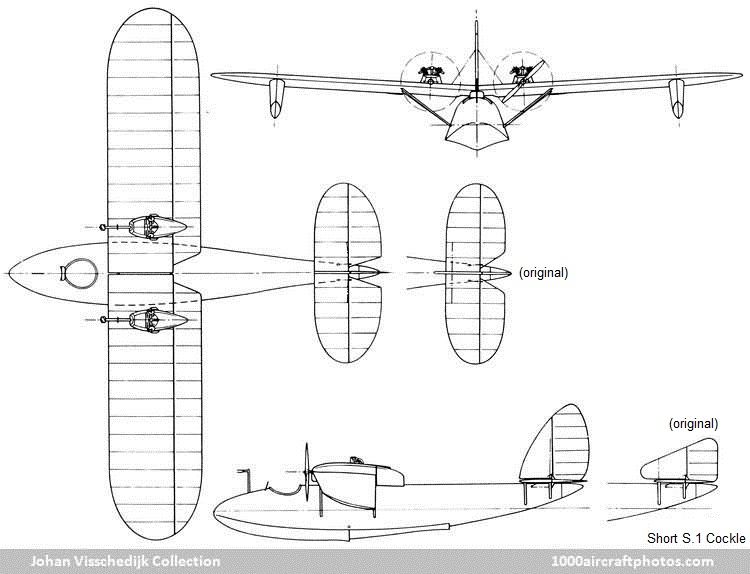02/28/2014. Remarks by
Johan Visschedijk: "In early 1924 Oswald Short of Bros. Ltd. at Rochester received a request from Lebbeus Hordern to build a small sporting seaplane for cruising and fishing around Botany Bay. Oswald Short and Francis Webber designed the Stellite, the first Short product to receive a design index number: S.1; this was the smallest flying boat ever built at that time.
The Stellite (c/n S.638) had fabric covering for the wings and tail surfaces, but was otherwise entirely of metal; the wings had two spars made from corrugated high-tensile steel strip, with built-up duralumin ribs, and were mounted on top of the hull and braced from about half span to the chines by tubular struts. The hull was a duralumin monocoque with a flared V-bottom, a main step just aft of the center of gravity and a second step halfway back to the tail.
Originally it was intended to use two Bristol Cherub flat-twin engines of 32 hp each, but their vibration at full power was excessive, and less-powerful 697 cc Blackburne V-twins had to be substituted; these were directly coupled to extended airs crew shafts, without speed reduction, and only developed 16 hp each at their maximum usable speed of 2,400 rpm.
The wings had small floats under their tips and full-span ailerons which could be drooped symmetrically to increase camber and so reduce alighting speed. A horizontal tube through the hull just above the main step was arranged to receive large wheels on stub axles, which were plugged in for easy beaching and ground handling.
Short S.1 Stellite (G-EBKA) (
Johan Visschedijk Collection)
The hull was launched in April 1924, and on completion five month later, September 3, the Stellite was registered G-EBKA.
Short S.4 Satellite (G-EBJU) (
Johan Visschedijk Collection)
However, the Air Ministry, who had already registered the Short S.4 Satellite G-EBJU, found the similarity of names confusing and requested the name Stellite to be changed to Cockle. The Cockle was launched on September 18, but failed to take off during repeated attempts lasting 33 minutes. Taxiing was resumed on October 7, but it still showed no inclination to fly, even with increased incidence.
At last, on November 7, after increasing wing incidence to 7°, John Parker managed to coax it off the water; it then flew strongly for ten minutes, reaching a maximum speed of 57 mph (92 kmh), but it was too heavily loaded for its two tiny engines, and it was no great surprise when Hordern declined to take delivery. Parker, himself a lightweight, could fly it only in a minimum of clothing, and even wore plimsolls to save the weight of shoes, so it would have been of little use to a hefty Australian.
Indeed, subsequent analysis of the first flight showed that the barometer was unusually high that day, the pressure altitude being 100 ft (30 m) below sea level, which no doubt made all the difference in taking off. In January 1925 the Cockle's original low aspect ratio fin and rudder were replaced by a taller surface of more than twice the area, to take care of swing when one engine failed. Half-hour acceptance tests for a
CofA were attempted on March 16 and 18, but on the first occasion a fuel pipe broke after 12 minutes, and on the second the port engine faded after 27 minutes.
In July 1925 it was loaned to the Air Ministry for evaluation at the
MAEE, which had recently moved from Grain to Felixstowe, being given the serial N193 for this purpose. Although only a few of the Felixstowe pilots succeeded in getting it off the water, Parker demonstrated it there on September 5, and it made a good impression, particularly on the score of resistance to salt-water corrosion; it was handed back to Short Brothers in August 1926.
Back at Rochester, it was thoroughly overhauled and re-engined with two specially modified Bristol Cherub IIs with reduction gears; with these on June 14, 1927, Parker only just managed to take off to a height of 10 ft (3 m), due to the starboard engine misfiring. He made a twelve-minute flight at 600 ft (183 m) on June 27 and a third fight of 35 minutes on July 6, noting a vibration wave passing through the wing spars when both engines were synchronized. In a further acceptance test of 22 minutes on July 13 a top speed of 73 mph (117 kmh) was recorded.
The Cockle was then purchased by the Air Ministry and dispatched to Felixstowe, where, after a final test by Parker on October 3, 1927, it was retained for exposure tests to obtain data on corrosion. It seems that the MAEE's favorable experience with the Cockle led to the later order for the even smaller
Parnall Prawn, whose hull was in fact manufactured at Rochester by Short Brothers under sub-contract to Parnalls."



